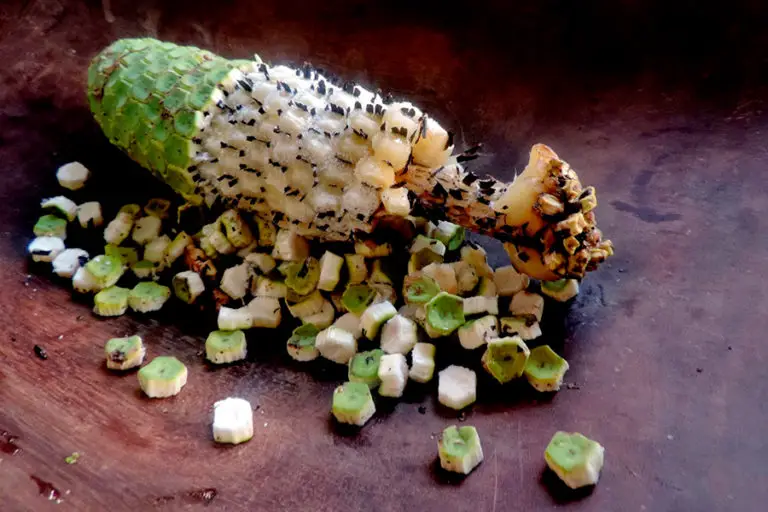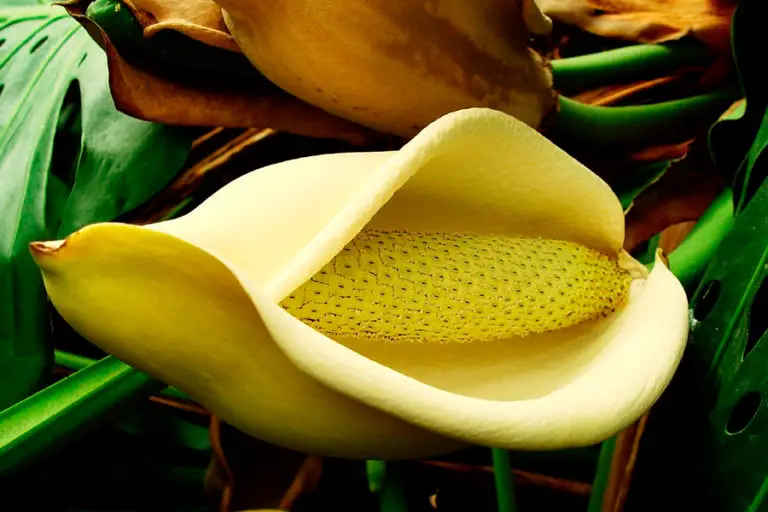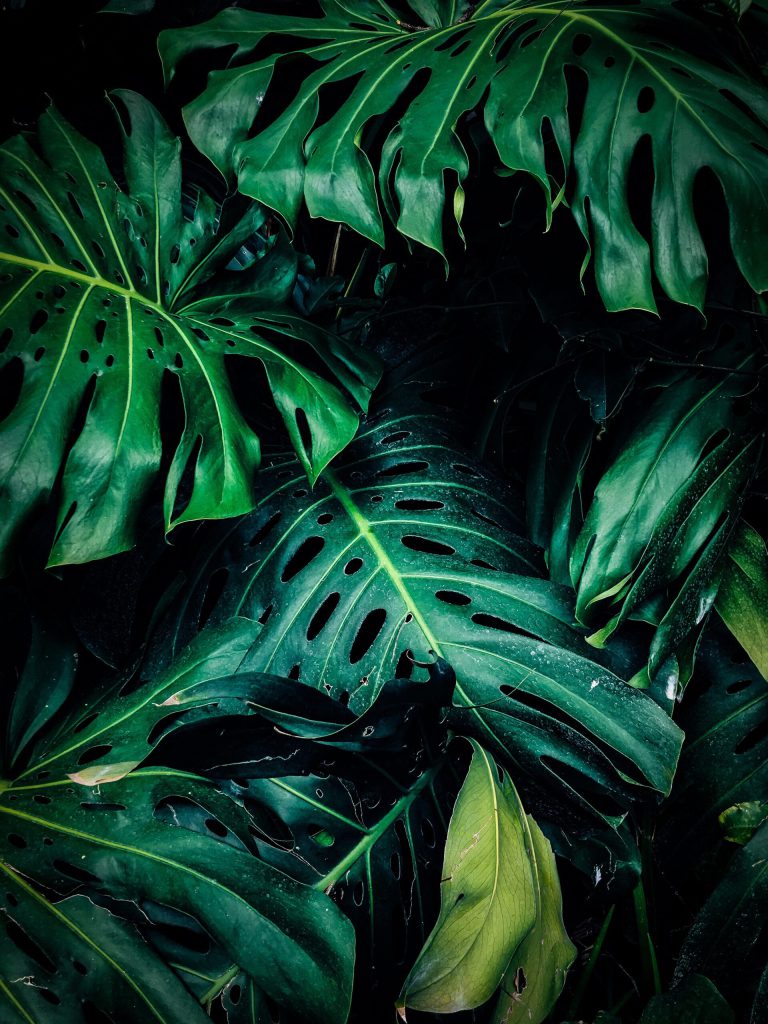Well, Monstera deliciosa sounds like a fancy Italian dish that you would order at a Michelin-starred restaurant. But instead of it being a delicious plate of pasta, it’s actually just a big, leafy plant that you can’t eat!
Talk about false advertising! 😉
Despite its name, Monstera Deliciosa is not typically used as a food source. However, it is a popular ornamental plant that is commonly used in interior decoration due to its large, unique leaves and low maintenance requirements.
It is also sometimes used in traditional medicine for treating various ailments such as skin infections, respiratory issues, and high blood pressure, but these uses are not well researched or widely accepted. So, unless you have a really adventurous palate, you’re better off admiring Monstera deliciosa from afar as a beautiful houseplant.
Introduction
Monstera deliciosa has been known for thousands of years, but it wasn’t until 1693 that French botanist Charles Plumier brought it back to show the king, who was quite fond of it.
Plumier wrote a book about the plants he discovered in America, but it is difficult to access as it is written in French.
Not much is known about Monsteras for the 250 years that follow.
In 1869, horticulturist William Robinson briefly mentioned in his book that “Monstera deliciosa was much sought after during recent winters.

The Monstera Deliciosa possesses three types of roots: aerial roots, aerial-subterranean roots, and lateral-subterranean roots. Despite their scientific names, these roots are quite easy to understand.
The lateral-subterranean root is the most common root that people are familiar with. These roots grow beneath the soil, which is why they are referred to as “subterranean.” Their purpose is to anchor the plant in the soil, absorb water, and uptake nutrients from the soil. Almost all plants, except for air plants, have these roots. They are called “lateral” because they grow sideways from the primary root that extends from the stem.
Arthritis – Tell me more
Arthritis is a term used to describe a group of conditions that cause inflammation and pain in the joints of the body. There are more than 100 different types of arthritis, but the two most common forms are osteoarthritis and rheumatoid arthritis.
Osteoarthritis is a degenerative condition that occurs when the protective cartilage that cushions the joints wears down over time, leading to pain, stiffness, and limited mobility.
Rheumatoid arthritis, on the other hand, is an autoimmune disease in which the body’s immune system mistakenly attacks the lining of the joints, causing inflammation and damage that can lead to deformity and disability if left untreated.
Symptoms of arthritis can vary depending on the type of arthritis and the severity of the condition, but common symptoms include joint pain, swelling, stiffness, and limited range of motion. Treatment for arthritis typically involves a combination of medications, physical therapy, and lifestyle changes designed to alleviate symptoms and improve joint function.
Rheumatoid Arthritits
Rheumatoid arthritis (RA) is a chronic inflammatory disorder that can cause significant pain, swelling, and stiffness in the joints. While the exact cause of RA is still not completely understood, there is evidence to suggest that it is likely the result of a combination of genetic and environmental factors.
Research has identified certain genes that may increase the risk of developing RA, but not everyone who has these genes will develop the condition. Environmental factors such as smoking, exposure to certain viruses or bacteria, and hormonal changes may also play a role in the development of RA.
Although RA can affect people of all ages, it is more common in women and typically develops between the ages of 30 and 60

Monstera Deliciosa Against Rheumatoid Arthritis
While Monstera deliciosa is not a scientifically proven treatment for rheumatoid arthritis, some traditional medicine practitioners believe that the roots of this plant may have anti-inflammatory properties that could potentially help to alleviate symptoms of arthritis. However, it’s important to note that these claims are largely based on anecdotal evidence and have not been extensively studied or validated through clinical trials.
If you are considering using Monstera deliciosa roots as a treatment for arthritis, it’s important to talk to your healthcare provider first to determine whether it is a safe and appropriate option for your individual needs. They may be able to provide you with more information about the potential benefits and risks of this treatment and help you decide whether it is right for you. Additionally, they can work with you to develop a comprehensive treatment plan that includes other evidence-based therapies for managing arthritis symptoms.
Other Uses
There have been whispers of a mysterious, hidden use for the Monstera deliciosa plant, whispered among those in the know. It is said that there is more to this tropical beauty than meets the eye, and those who discover its secret power can reap incredible rewards.
Rumors swirl of a special potion made from the Monstera deliciosa, said to have miraculous healing properties. Some claim it can cure even the most stubborn of ailments, while others believe it can grant the imbiber with superhuman strength and abilities.
Despite these tantalizing whispers, the true nature of this mysterious potion remains shrouded in secrecy 😎
Only a select few are said to know the recipe, and they guard it fiercely. Those who seek to uncover the truth are met with cryptic messages and dead ends.
Could it be that the Monstera deliciosa holds a secret key to unlocking untold power and vitality? The truth may be out there, waiting for those brave enough to uncover it.

Monstera Deliciosa Against Cancer
Monstera deliciosa contains various natural compounds such as flavonoids, tannins, and alkaloids that have been shown to have antioxidant and anti-inflammatory effects in laboratory studies.
If you are considering using Monstera deliciosa or any other alternative therapy as a treatment for cancer, it’s important to talk to your healthcare provider first.
They can help you evaluate the safety and potential effectiveness of these treatments and can work with you to develop a comprehensive treatment plan that includes evidence-based therapies for managing cancer.
How to take care of Monstera Deliciosa? [Bonus]
Monstera is relatively easy to cultivate. It is enough to provide it with suitable habitat conditions and it will reward you with a beautiful appearance. The biggest problems usually arise from improper moisture conditions of both air and substrate. The plant signals abnormalities through changes in its appearance. It is best to avoid any damage that may reduce the decorative value of our plants, and in extreme cases, may even eliminate them from our collections.
Monstera – Brown tips of the leaves.
The brown tips on the leaves of Monstera indicate that the air around it is too dry. Despite being a relatively tolerant plant, it can still react adversely in extreme cases. To prevent damage to the plant, it is important to regularly mist the leaves. You can use soft water at room temperature and mist the leaves twice a week. Alternatively, you can use an air humidifier or simply place a tray of water near the plant to improve the microclimate. It’s important to avoid placing the Monstera plant above a radiator during the heating season to prevent it from drying out.
Monstera – Why leaf turn yellow?
Monstera requires slightly moist soil. Watering should be regular but not too frequent. We especially limit it during the winter, especially when the plant is in a slightly cooler room.
An important issue is to control the amount of water in the pot (there must be holes and proper drainage at the bottom of the container) because overwatering the plant is one of the biggest cultivation mistakes.
Monstera leaves strongly react to excess water, changing their color to yellow, and sometimes turning brown. If the situation is very serious and the plant has rotten roots, you can try to save it by making cuttings from the top shoots.
However, it is best to follow cultivation recommendations and avoid mistakes.
Monstera – Other brown spots on leafs?
Fungal diseases on Monstera most often appear as a result of overwatering, heavy soil, and lack of drainage and drainage holes in the pot.
The cause of fungal disease can also be the introduction of spores from other plants. It’s worth knowing that weakened and poorly conditioned Monstera plants are particularly susceptible to fungal diseases. In such conditions, it’s not difficult for leaf spots – a fungal disease that manifests itself as drying brown spots with a yellow border – to appear.
Initially, the spots are small but can spread quickly and affect the entire Monstera leaf.
If a fungal infection appears, remove and destroy the affected leaves, taking care not to spread the disease. Use clean tools for this purpose and disinfect them after the procedure. The plant should be moved to an isolated place so that the fungus doesn’t attack other plants.
If the soil is heavily overwatered and there are no drainage holes in the pot, we should correct our cultivation mistakes by replacing the soil with permeable soil with a mandatory drainage layer and drainage holes at the bottom of the container. During this process, it’s also worth checking the condition of the roots for fungal diseases.
End
Monstera deliciosa is a plant that has various uses. Its leaves and stems are commonly used for ornamental purposes, while its roots are sometimes used to make infusions believed to have medicinal properties for treating conditions such as orchitis, arthritis, ear swelling, dandruff, and ulcers. Additionally, like many other plants, Monstera deliciosa is believed to have air-purifying properties when grown indoors.
The roots of the Monstera deliciosa plant are sometimes used to make infusions that are believed to have medicinal properties. These infusions are thought to be helpful in treating a variety of conditions, including orchitis, arthritis, ear swelling, dandruff, and ulcers. In addition, like many other plants, Monstera deliciosa is believed to have air-purifying properties when grown indoors and to even aid when you suffer from cancer.

